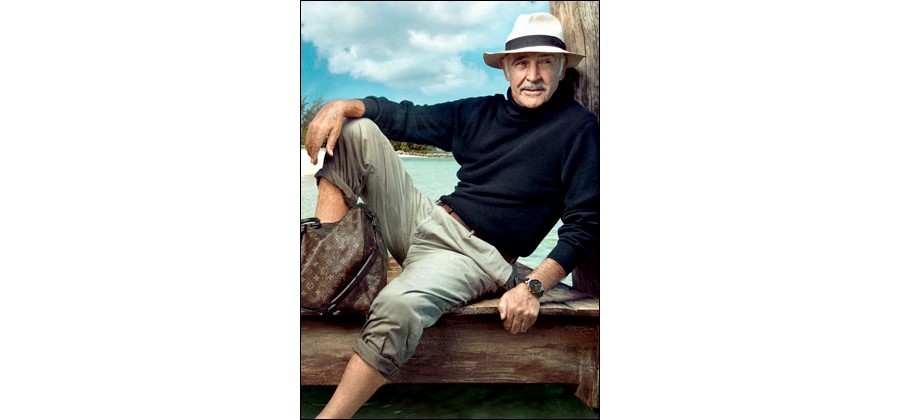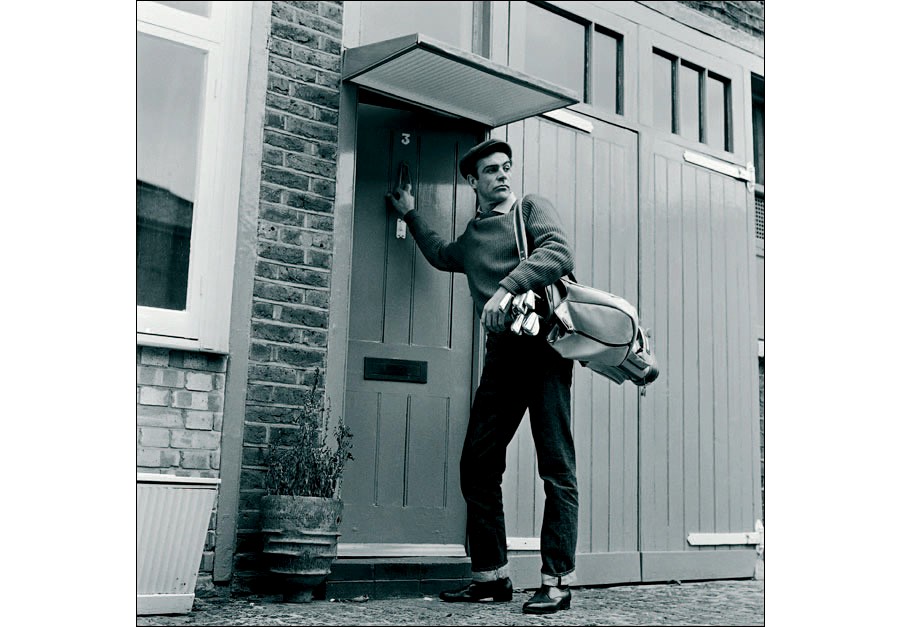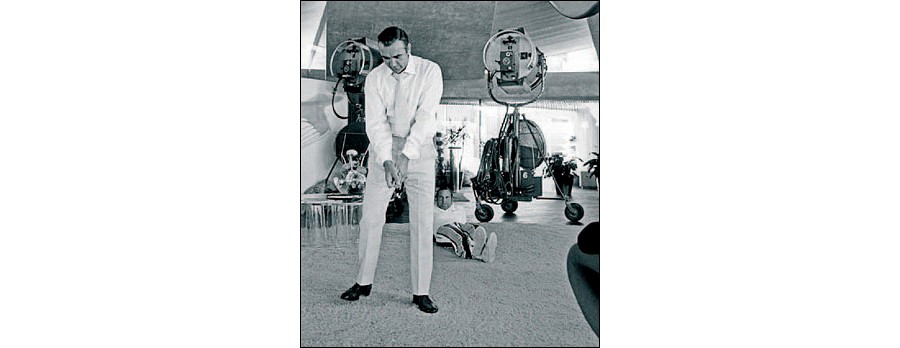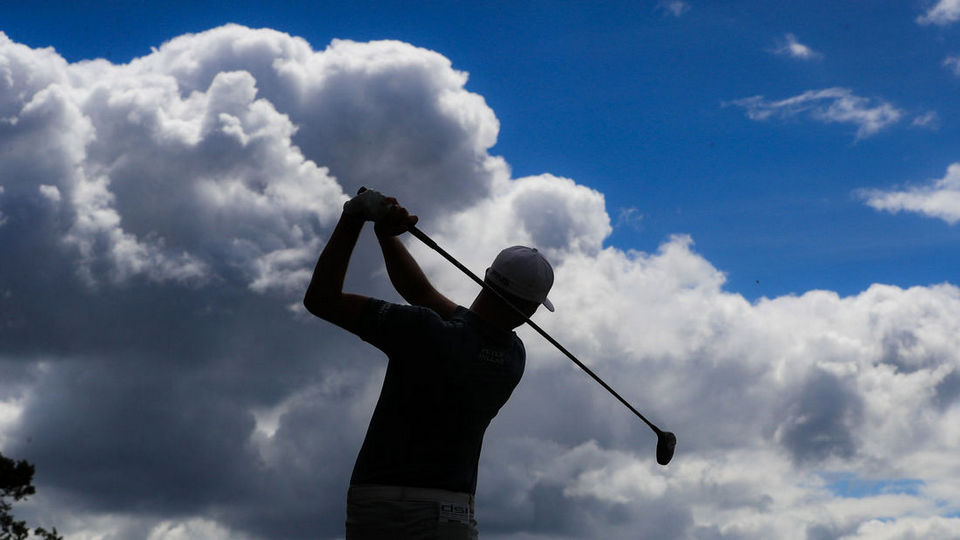
Landing the role of the world's most famous secret agent not only elevated Sir Sean Connery to international stardom it also set alight his passion for the game of golf. In this extract from his book Being a Scot, the original 007 explains all.
I never had a hankering to play golf, despite growing up in Scotland just down the road from Bruntsfield Links, which is one of the oldest golf courses in the world. It wasn't until I was taught enough golf to look as though I could outwit the accomplished golfer Gert Frobe in Goldfinger that I got the bug. I began to take lessons on a course near the Pinewood film studios, and was immediately hooked on the game. Soon it would nearly take over my life. I began to see golf as a metaphor for living, for in golf you are basically on your own, competing against yourself and always trying to do better. If you cheat, you will be the loser, because you are cheating yourself. When Ian Fleming portrayed Auric Goldfinger as a smooth cheater, James Bond had no regrets when he switched his golf balls, since to be cheated is the just reward of the cheater.
EXT. GOLFCOURSE - DAY
JAMES BOND spots GOLDFINGER cheating.
JAMES BOND You play a Slazenger 1, don't you?
AURIC GOLDFINGER Yes, why?
JAMES BOND This is a Slazenger 7.
JAMES BOND shows GOLDFINGER his own golf ball.
JAMES BOND Here's my Penfold Hearts. You must have played the wrong ball somewhere on the 18th fairway. We are playing strict rules, so I'm afraid you lose the hole and the match.

During the filming of Goldfinger, I learned the essential challenge of links golf in Royal Dornoch in the northeast Highlands. Ever since then I have been drawn to links golf and its enduring challenges, and I've learnt to play a variety of shots under constantly changing conditions. It's quite naked golf. There aren't many trees, or other features, to aid your alignment. Much is left to the imagination and to picturing the shot. Then there's the wind, always a factor on a links course. You're required to play run-up shots and to work the ball this way and that.
Within a few years of Goldfinger, my golf was good enough to play against professionals in competitions. I was invited to join one of Bing Crosby's show business amateur teams against professional golfers in America, which was an early forerunner of the pro-ams. It gave me the idea of promoting a Pro-Am tournament in Scotland to showcase our Scottish International Education Trust. Since one of its first board members, the shipbuilder Sir Iain Stewart, had fabulous connections in the world of golf, the planning of the event got off to a flying start. We settled on the out-and-back Ayrshire course of Royal Troon, and chose the week following the British Open. Since all the key players in the world would be congregating at St Andrews that year, travelling down to Troon from Fife would hardly be crossing the Atlantic.
Because the Troon course had been having problems with encroaching tides and with crowd control, we recruited rugby players as volunteer policemen, who made a great job controlling the 20,000 who came for the tournament. The amateurs included the comedian Jimmy Tarbuck, the footballer Kenny Dalglish, the boxer Henry Cooper, along with Eric Sykes and me.

Sponsors put up generous prizes and we allowed them to place their logo on the holes for £1,000. Eagle Star Insurance took the first hole, which was a drivable par-four. But when two players in the first half-dozen holed out in an eagle three to each claim their prize of £500, Iain Stewart thought we'd all be left penniless. Fortunately only one more player holed out in three. The tournament was a great success, with Christy O'Connor becoming the all-round winner, and it re-established Royal Troon as a venue for future Opens. In 1970 I won a trophy at a tournament in Morocco, La Coupe du Roi de Maroc. Then the next day I was drawn against a brilliant player who had won the women's trophy. That was Micheline Roquebrune. We were married one year later.
In the late 1960s, when I was mastering the game, a remarkable book came out, catching the spirit of the times. Michael Murphy's Golf in the Kingdom took the frustrations that often befall the average golfer and turned them into a mystical Zen experience. A young golfer takes lessons from a wily left-handed all-knowing professional called Shivas Irons. It's a name charged with meaning for the impressionable young man from California, straight out of college, on his way to seek enlightenment in India. Shivas is a seer who delivers golfing nuggets of Celtic wisdom in the spirit of a Zen master.
His name comes from Aberdeenshire and could derive from the old Scots verb 'shiv', meaning to push or shove. Then there's the debatable phrase 'to be blown to smithereens', which he shifts to 'shivereens' so as to connect the name to Shiva - the ancient Hindu god of destruction.

And redemption. So Murphy finds his shaman, not in an Indian ashram with his mystic guru Aurobindo, but out there on a golf course in the Scottish county of the Kingdom of Fife.
"Extraordinary powers are unleashed in a back-swing governed by true gravity," says Shivas. "If you practise the skill of the inner eye you put streamers of heart power for the ball to fly up on." I thought Murphy was on to something.
He was describing "inner golf", that state of grace which every golfer aspires to but seldom reaches, when every stroke transcends past form. It's that feeling of a winning certainty which must happen in every sport when the player enters what Murphy calls "the zone". My friend Jackie Stewart confirmed this as a motor-racing champion.
As soon as I read Golf in the Kingdom, I thought of its visual possibilities on the screen. For years Clint Eastwood held the movie rights and serendipitously, in the spirit of the book, he had me down to play the enigmatic Shivas. For permission to film at the Royal & Ancient Golf Club at St Andrews, I put him in touch with the Secretary, who Clint, given his title, may have thought held a more lowly position in this venerable club than he did. When he dropped in on the course by helicopter, the Secretary was less than impressed. This left little to discuss, and nothing much more was heard of Clint's plans.
Sad, because a screen version of Golf in the Kingdom would have been a great double for me, combining my passions for golf and the movies, especially if we had been able to film at St Andrews. But as the hippytrippy '60s imploded into the cynical '70s, 'Golf in the Swingdom' - as one sneering reviewer in Scotland called it - Murphy's quirky vision was soon lost in the rough for me.

Over the years golf has taught me much, and its implicit codes of conduct have provided me with the nearest I have ever come to religion. A golf player is on his honour to call a shot against himself and to be considerate to other players following up behind. I can illustrate this well from an incident I heard about when playing a round at Pine Valley, considered to be the finest golf course in America.
Cliff Robertson, a veteran golfer in his 80s who carried the whole history of Pine Valley on his shoulders, came up behind a foursome. Etiquette would have normally let him play through. He asked the caddie to ask permission for this from the foursome, but he returned to say that their answer was no. So he got on to his cart and went up to them.
"Before you say anything," he told them, "you have no standing. There is no one in front of you. Now you are not going through." Then he turned to the caddie: "Take all their bags back on the cart to the club house." "Hey, don't touch our clubs!" one protested. "Who invited you?" "Some member." "You will never set foot on Pine Valley in your lives again. And your friend is now barred from Pine Valley for a year. Now I would like to play through." What a marvellous lesson that was.
The Vatican of golf is the Royal & Ancient Golf Club of St Andrews because it established the rules of golf in 1754. Some ten years later the number of holes at St Andrews was reduced from 22 to 18, and slowly over the years golf courses around the world fell into line. With a worldwide membership of 2,400, the R&A is among the hardest golf clubs in the world to join.
Fortunately, when Sir Iain Stewart was Captain of the R&A, he proposed me. I was able to do the same for my old friend, the world-champion racing driver Jackie Stewart, who can now proudly sport the R&A necktie. Its emblem depicts St Andrew bearing the saltire cross on which he was crucified. "Only the Scots would have thought of celebrating a national game," said the golfer and broadcaster Alistair Cooke, "with the figure of a tortured saint."
Copyright © Sean Connery 2008. Extracted from BEING A SCOT by Sean Connery and Murray Grigor, published by Weidenfeld and Nicolson and generally available at £20.00.
Reproduced with kind permission of Golf International.
Originally posted in 2014



